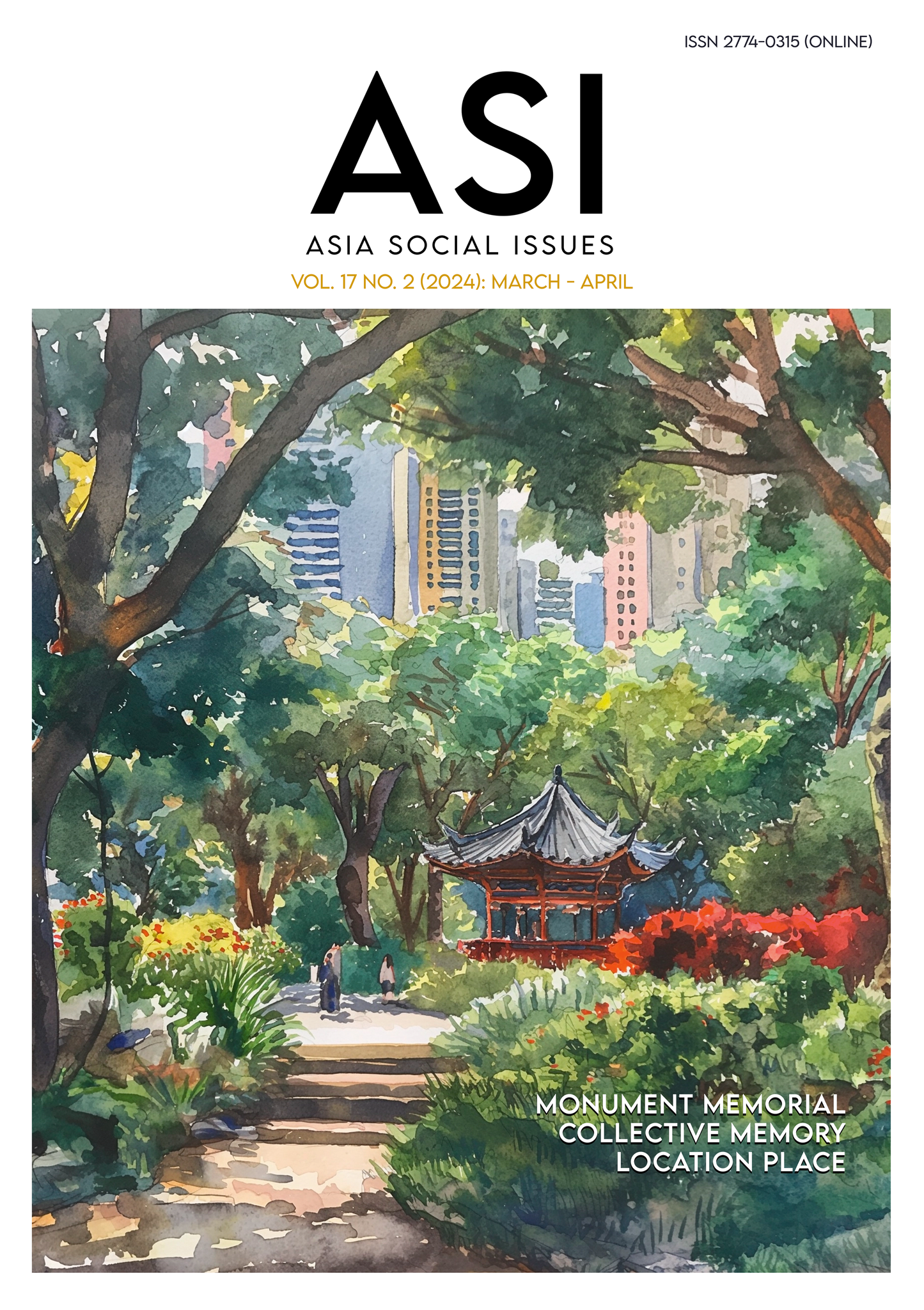Corruption and Economic Growth: An Empirical Study in 12 Countries
Main Article Content
Abstract
The impact of corruption on economic growth receives excellent attention in empirical studies. Understanding the relationships between corruption concerning the economy is essential to ensure stable economic development. This research article aims to investigate the relationship between corruption and economic growth in 12 countries over 26 years from 1995 to 2020. This research article examines this relationship in the context of the panel data framework. Panel unit root, panel cointegration tests, panel Dynamic Ordinary Least Squares (DOLS) estimation, and panel Vector Error Correction Model (VECM) methodology associated with the Wald test is applied, respectively. The results show that corruption generates a negative effect on economic growth. In other words, a 1 percent rise in the transparency level (low corruption) will enhance the real GDP growth by 0.20 percent in the long run. Short-run and long-run causality runs from corruption to GDP and both variables are cointegrated. The results conclude that lowering the corruption rate is the precondition for continued growth.
Article Details

This work is licensed under a Creative Commons Attribution-NonCommercial-NoDerivatives 4.0 International License.
Copyright: CC BY-NC-ND 4.0
References
Acaravci, A., Artan, S., Hayaloglu, P., & Erdogan, S. (2023). Economic and institutional determinants of corruption: The case of developed and developing countries. Journal of Economics and Finance, 47, 207-231.
Aghion, P., Akcigit, U., Cage, J., & Kerr, W. R. (2016). Taxation, corruption, and growth. European Economic Review, 86, 24-51.
Ahmad, E., Ullah, M. A., & Arfeen, M. I. (2012). Does corruption affect economic growth? Latin American Journal of Economics, 49(2), 277-305.
Aidt, T., Dutta, J., & Sena, V. (2008). Governance regimes, corruption and growth: Theory and evidence. Journal of Comparative Economics, 36(2), 195-220.
Barik, R., & Lenka, S. K. (2023). Does financial inclusion control corruption in upper‐middle and lower‐middle income countries? Asia-Pacific Journal of Regional Science, 7, 69-92.
d’Agostino, G., Dunne, J. P., & Pieroni, L. (2016). Government spending, corruption, and economic growth. World Development, 84, 190-205.
Fisher, R. A. (1932). Statistical methods for research workers (4th eds.). Edinburgh, United Kingdom: Oliver & Boyd.
Hsiao, C. (2007). Panel data analysis—advantages and challenges. Test, 16, 1-22.
Humphreys, M., Sachs, J. D., & Stiglitz, J. E. (2007). Escaping the resource curse. New York: Columbia University Press.
Kao, C. (1999). Spurious regression and residual-based tests for cointegration in panel data. Journal of Econometrics, 90(1), 1-44.
Kao, C., & Chiang, M. H. (2001). On the estimation and inference of a cointegrated regression in panel data (pp. 179-222). In Baltagi, B. H., Fomby, T. B., & Catter Hill, R. (Eds.). Nonstationary panels, panel cointegration, and dynamic panels. Bingley, England: Emerald Group Publishing Limited.
Mackinnon, J. G., Haug, A. A., & Michelis, L. (1999). Numerical distribution functions of likelihood ratio tests for cointegration. Journal of Applied Econometrics, 14(5), 563-577.
Maddala, G. S., & Wu, S. (1999). A comparative study of unit root tests with panel data and a new simple test. Oxford Bulletin of Economics and Statistics, 61(S1), 631-652.
Mauro, P. (1995). Corruption and growth. The Quarterly Journal of Economics, 110(3), 681-712.
Mauro, P. (1997). The effects of corruption in investment and government expenditure: A cross-country analysis. In Elliot, K. A. (Ed.). Corruption and the Global Economy. Washington DC: Institute for International Economics.
Mauro, P. (2004). The persistence of corruption and slow economic growth. IMF Staff Papers, 51(1), 1-18.
Méndez, F., & Sepúlveda, F. (2006). Corruption, growth and political regimes: Cross country evidence. European Journal of Political Economy, 22(1), 82-98.
Mo, P. H. (2001). Corruption and economic growth. Journal of Comparative Economics, 29(1), 66-79.
Nwoke, U., Ekwelem, C. M., & Agbowo-Egbo, H. C. (2023). Curbing corruption and promoting a more efficient corporate governance regime in Nigeria. Journal of Financial Crime, 30(2), 536-548.
Rose-Ackerman, S. (1997). Political systems and corruption (pp. 35-62). In Elliot, K. A. (Ed.). The Political Economy of Corruption. New York: Routledge.
Shao, J., Ivanov, P. C., Podobnik, B., & Stanley, H. E. (2007). Quantitative relations between corruption and economic factors. The European Physical Journal B, 56, 157-166.
Shera, A., Dosti, B., & Grabova, P. (2014). Corruption impact on economic growth: An empirical analysis. Journal of Economic Development, Management, IT, Finance and Marketing, 6(2), 57-77.
Solow, R. M. (1956), A contribution to the theory of economic growth. Quarterly Journal of Economics, 70, 65-94.
Stojkoski, V., Popova, K., & Tevdovski, D. (2017). Financial development and growth: Panel cointegration evidence from South-Eastern and central Europe. Munich Personal RePEc Archive, 80802, 1-19.
Tanzi, V. (1998). Corruption around the world causes, consequences, scope, and cures. IMF Staff Papers, 45(4), 559-594.
Wagner, M., & Hlouskova, J. (2009). The performance of panel cointegration methods: Results from a large scale simulation study. Econometric Reviews, 29(2), 182-223.


